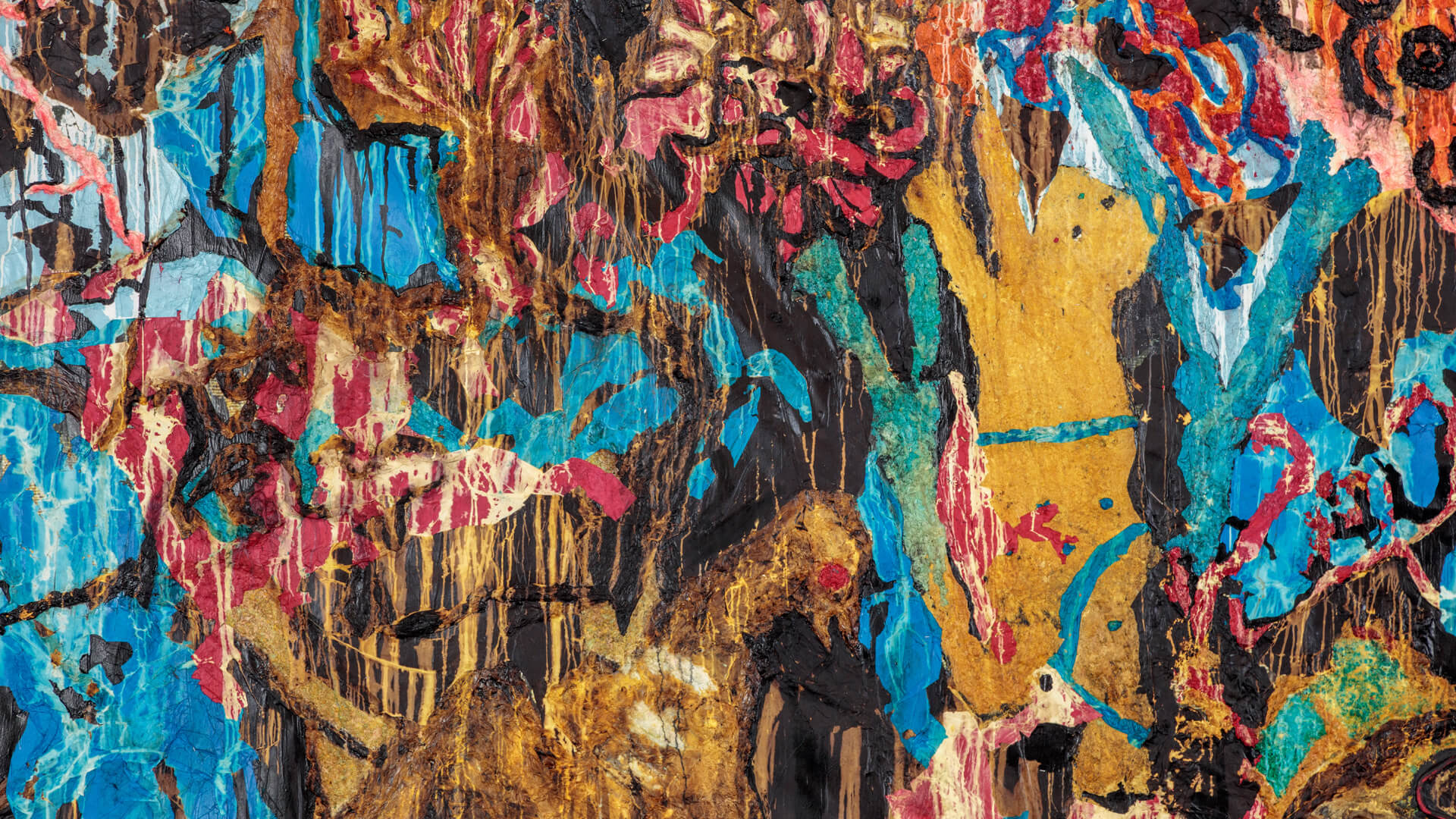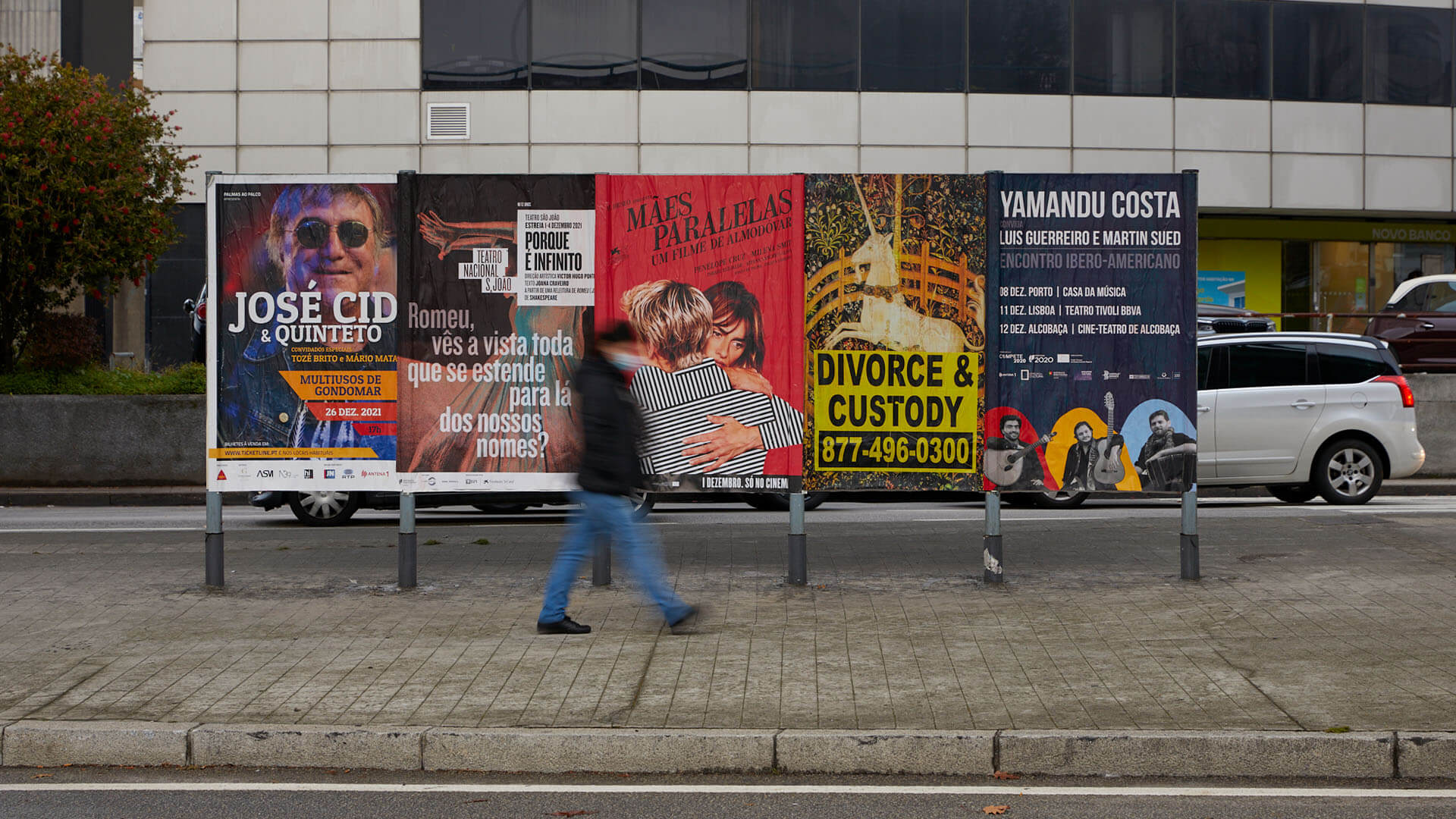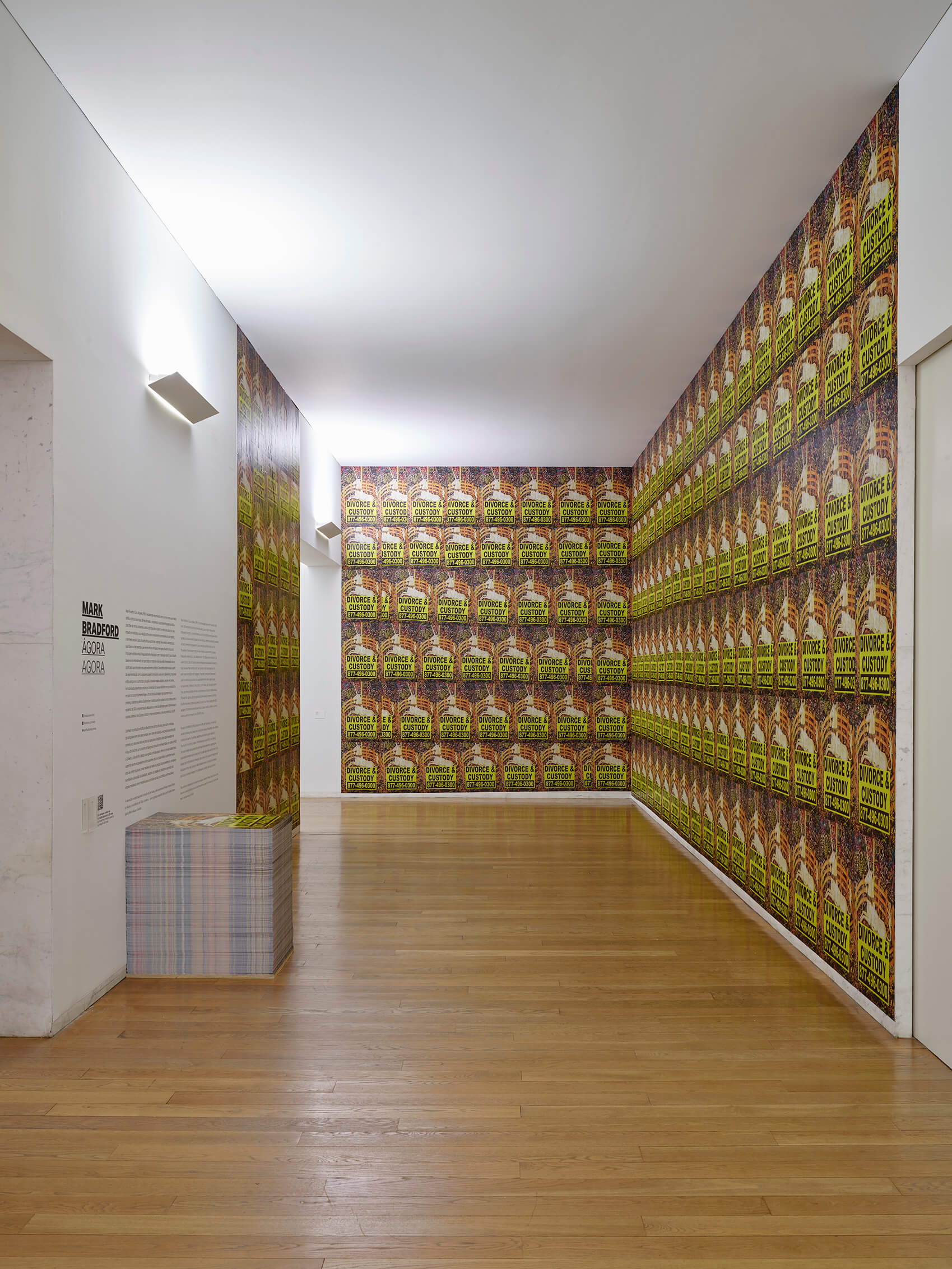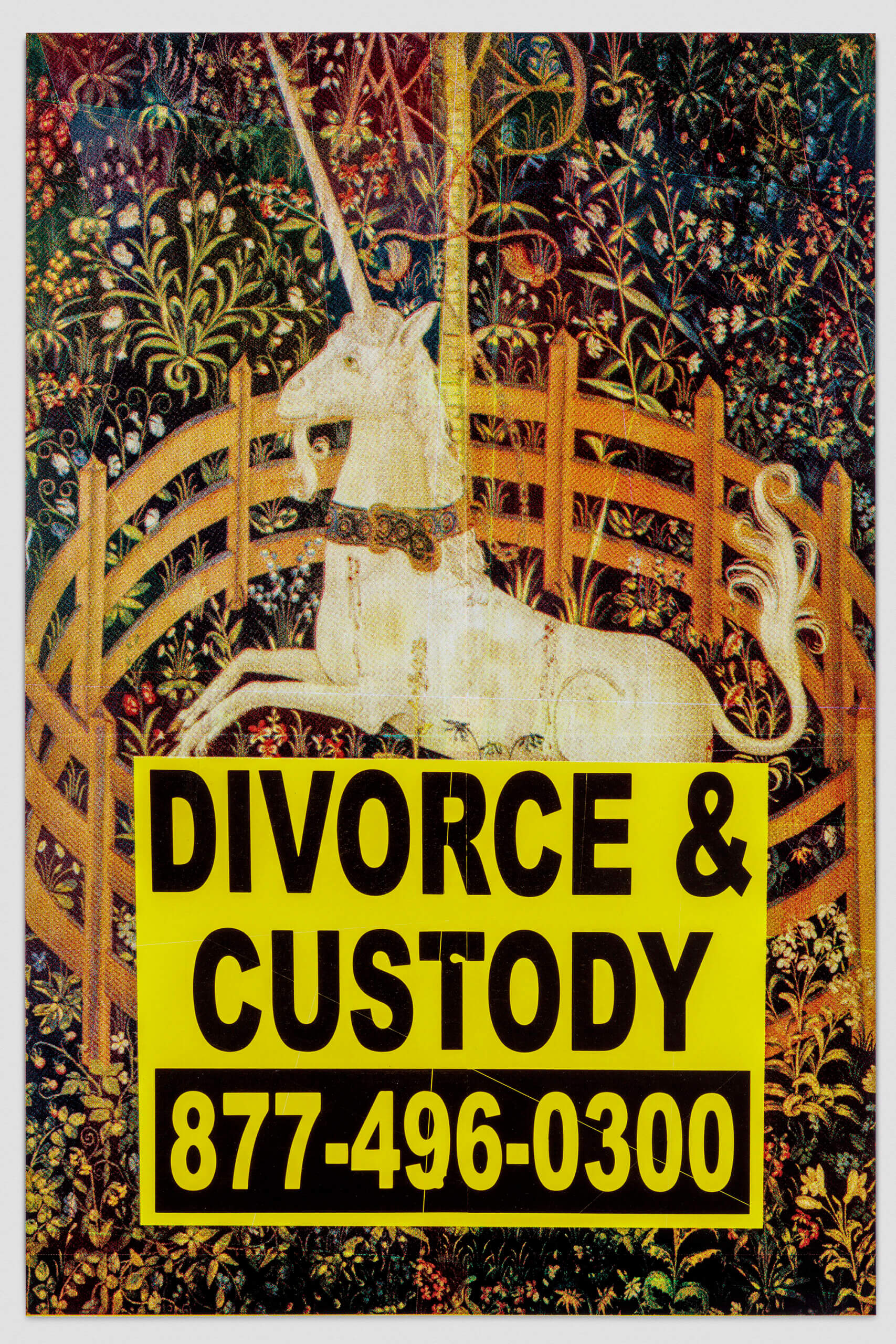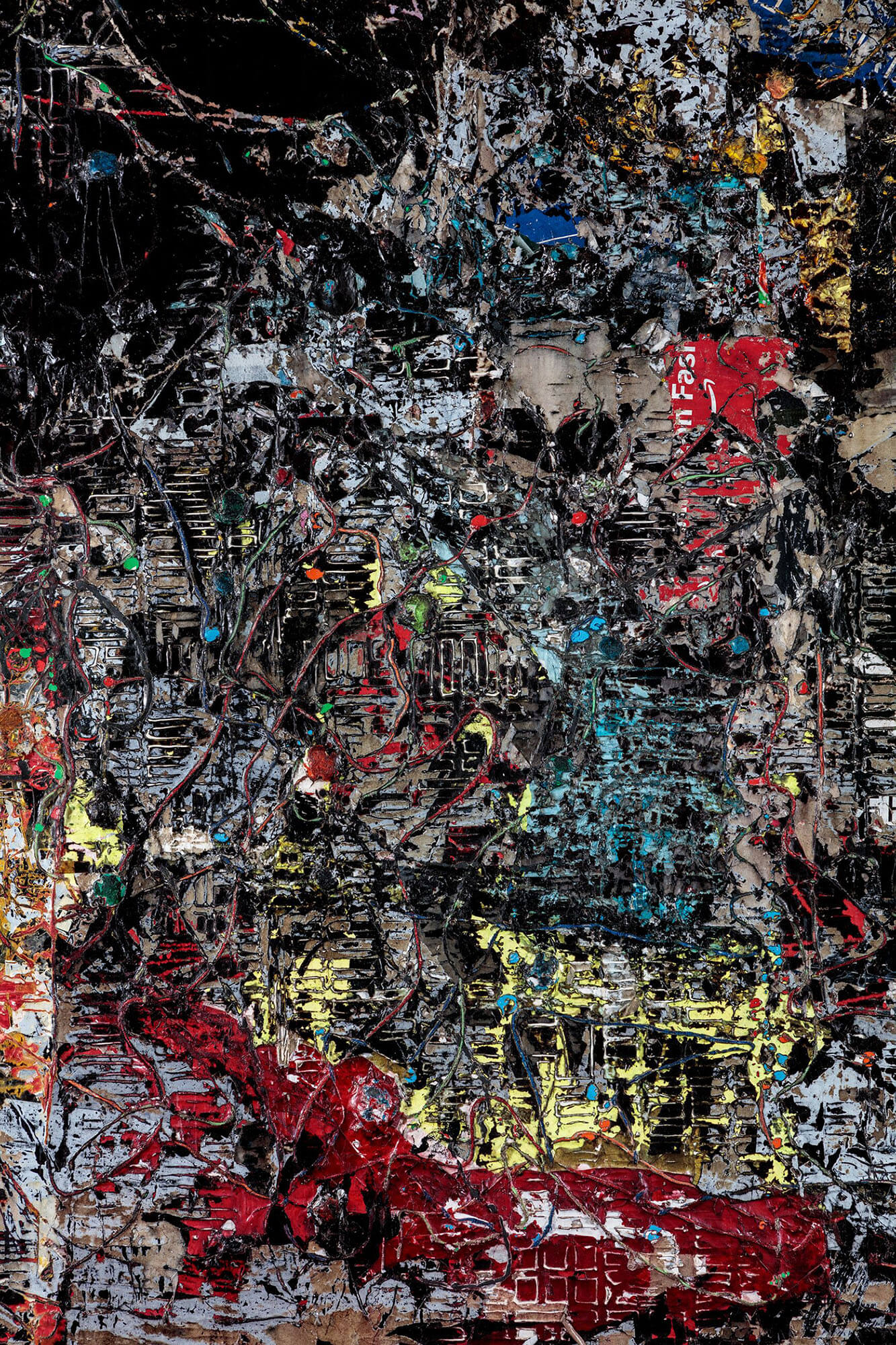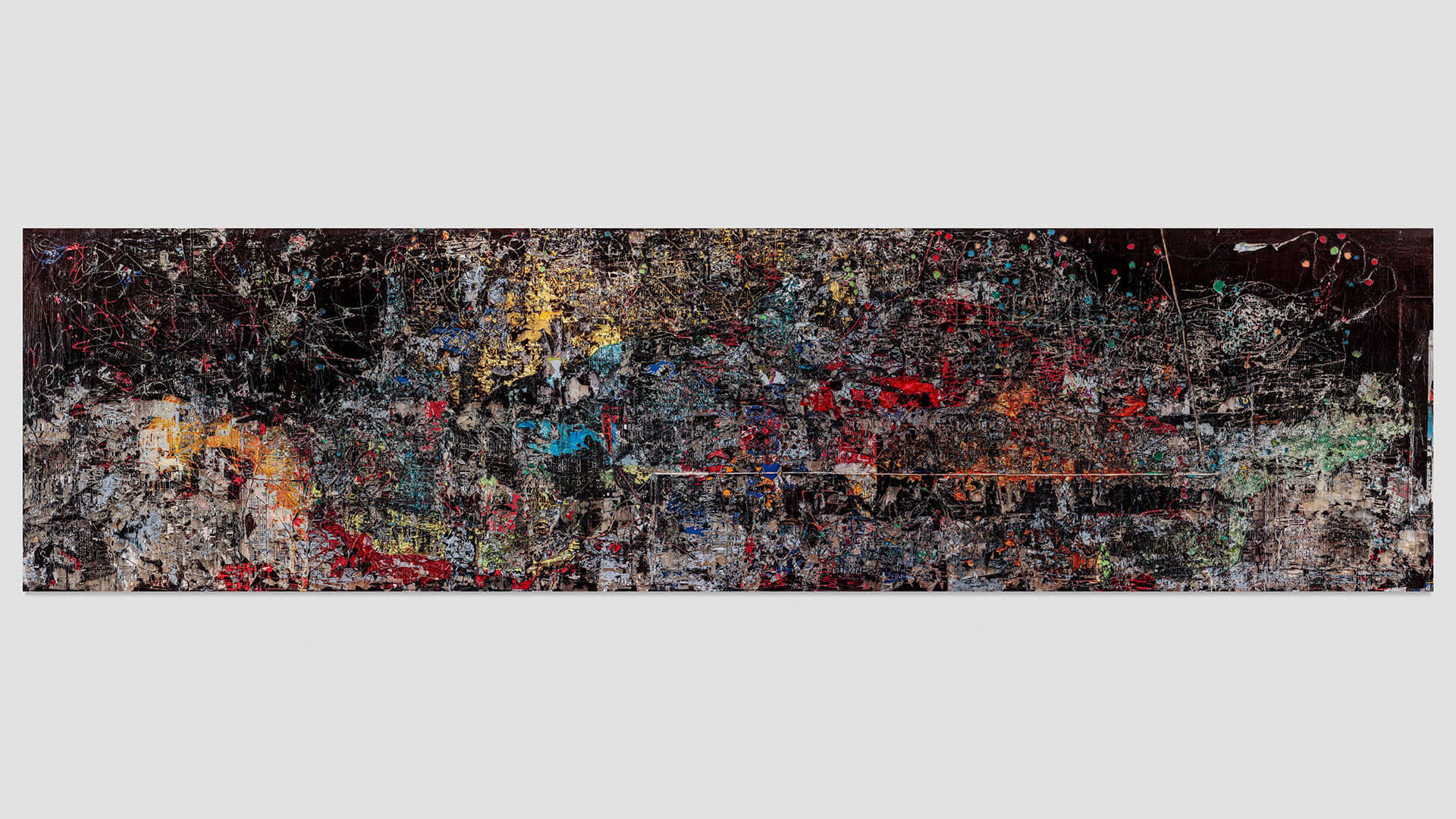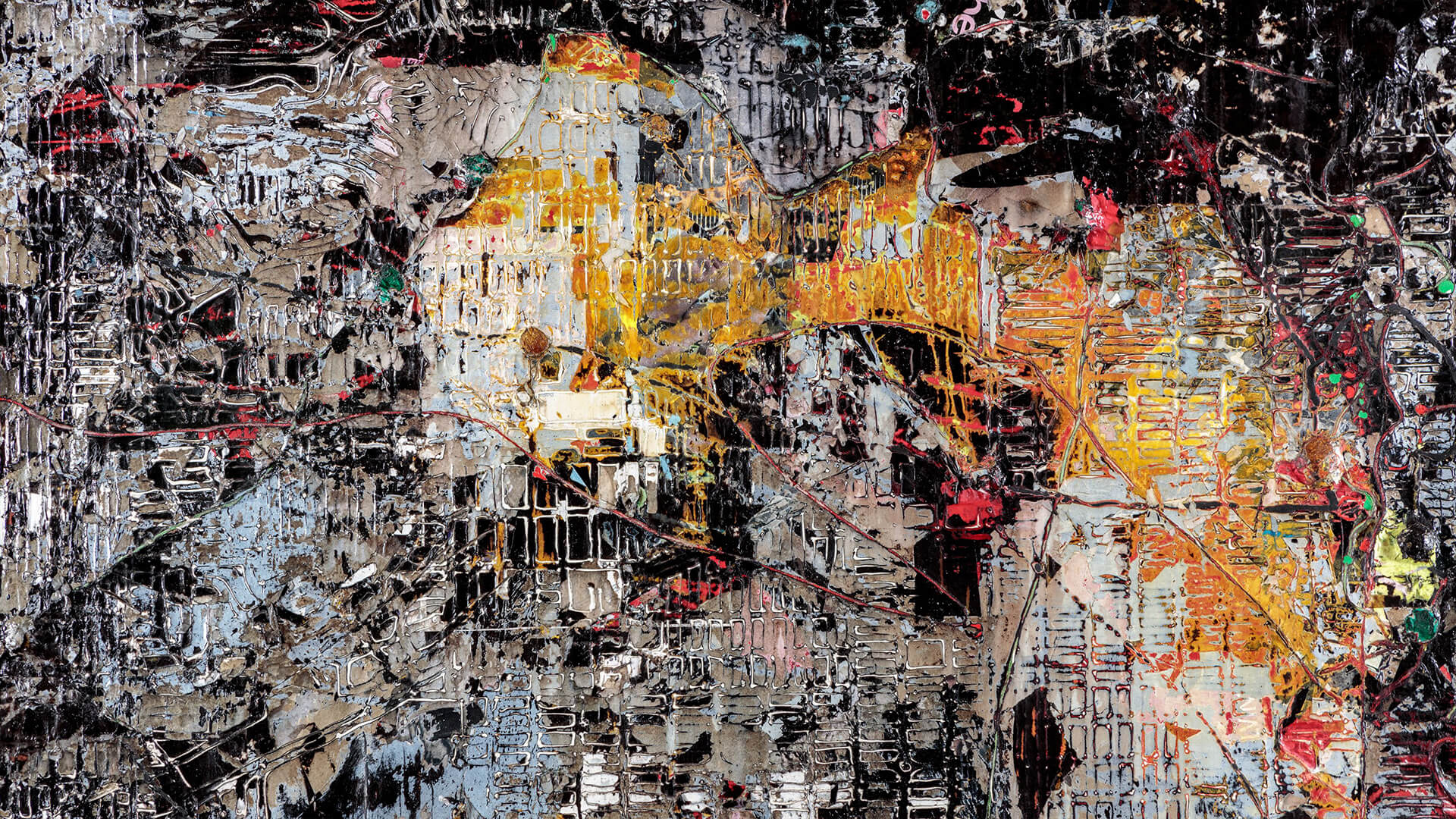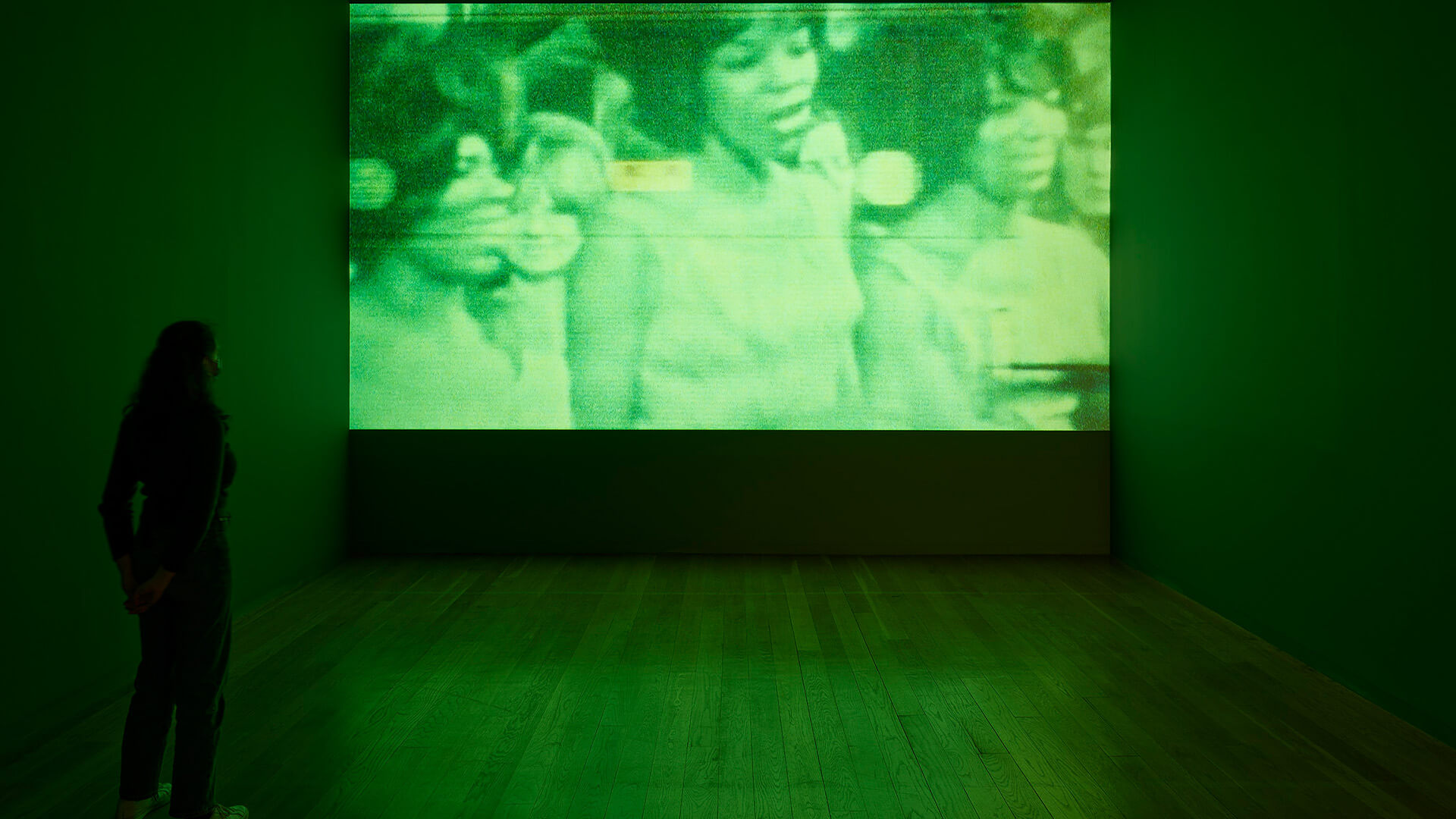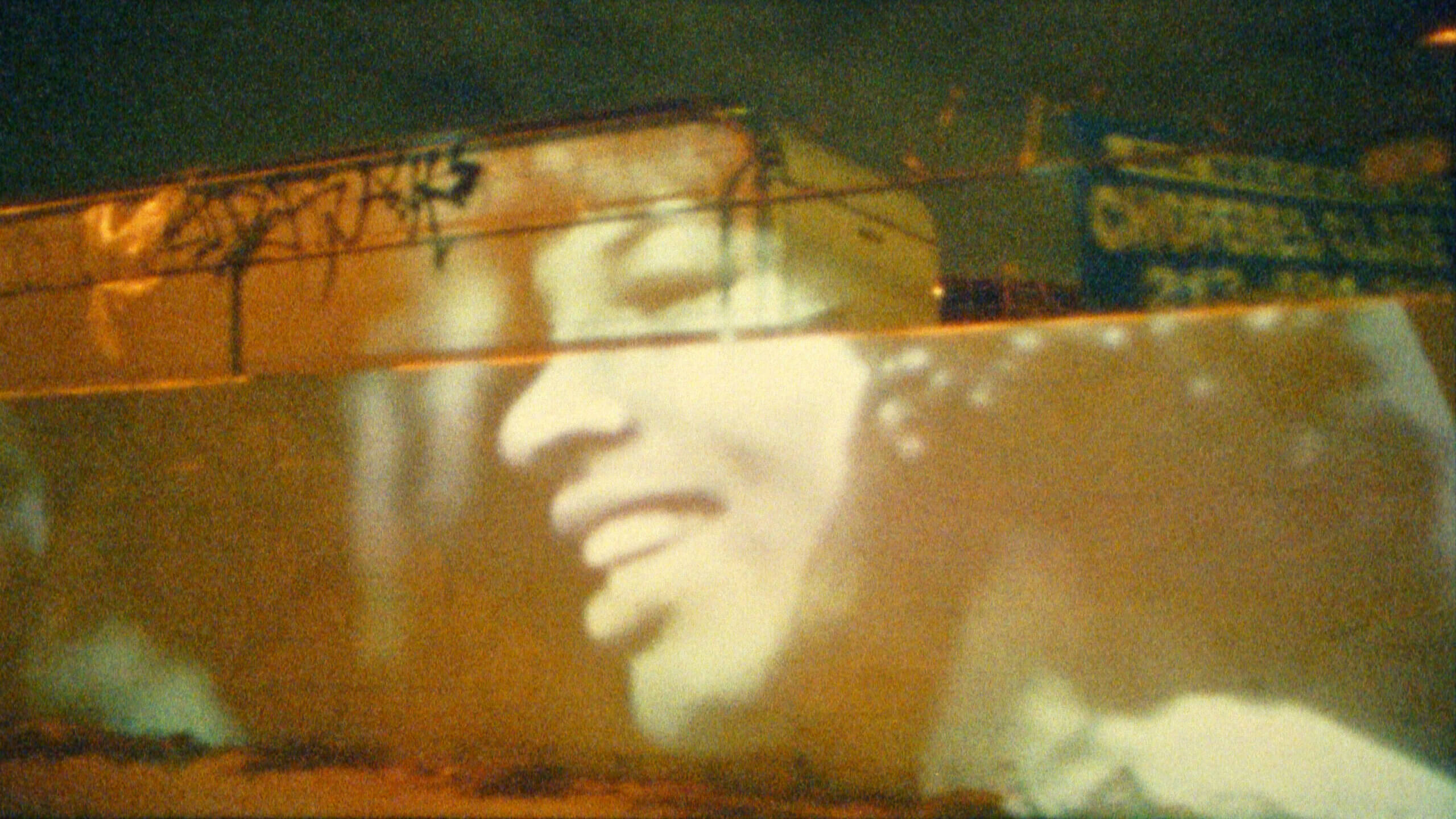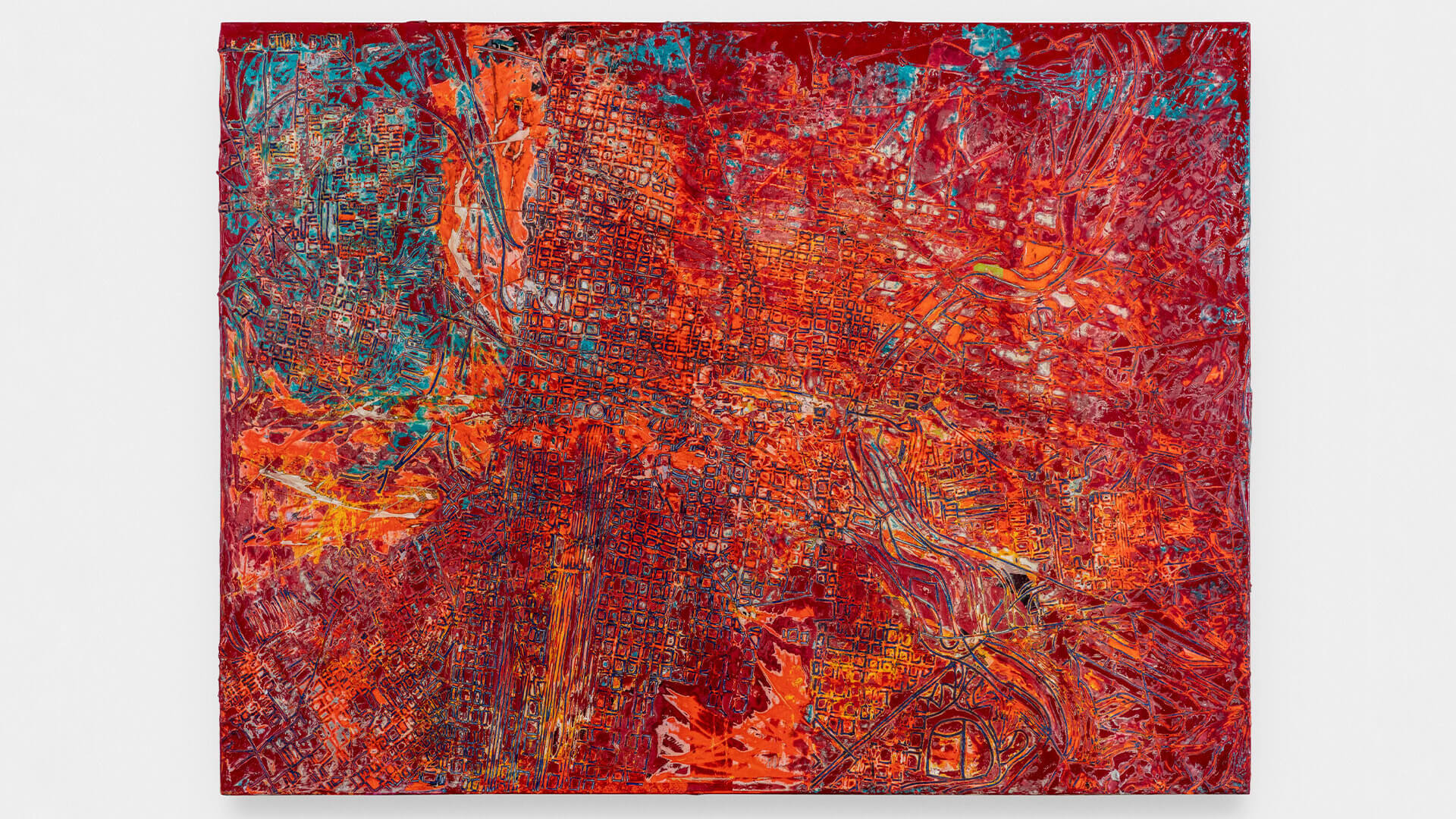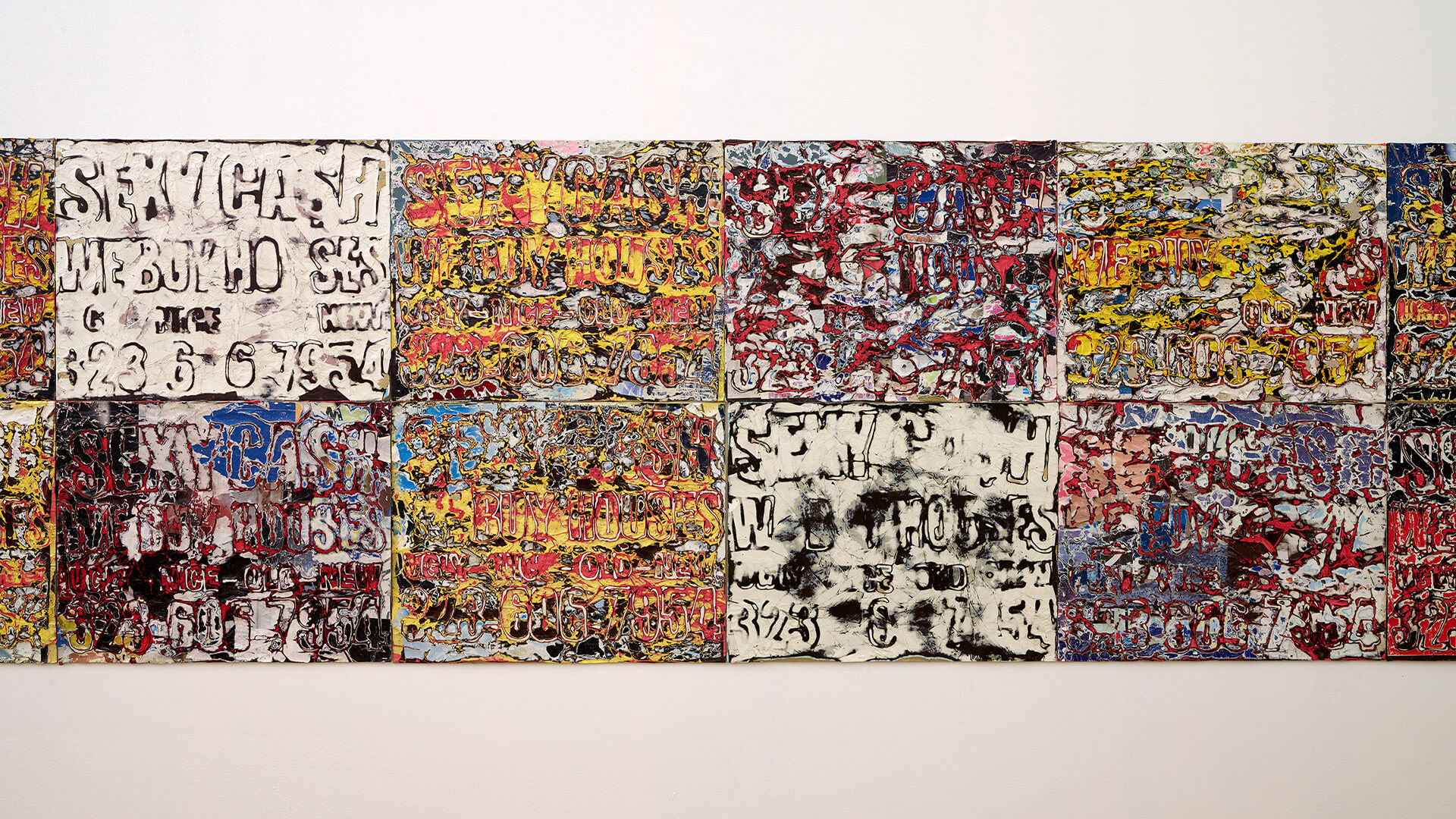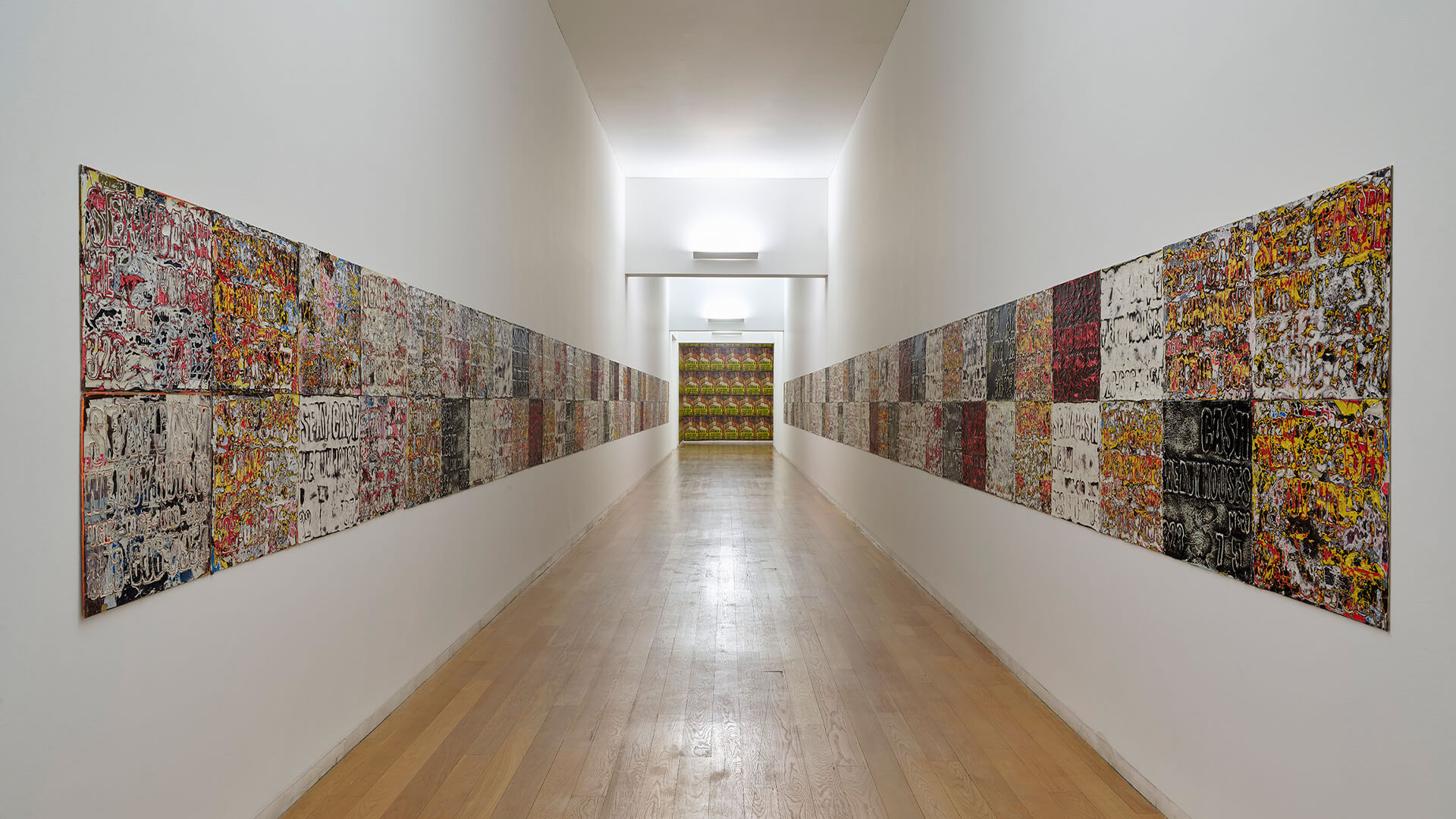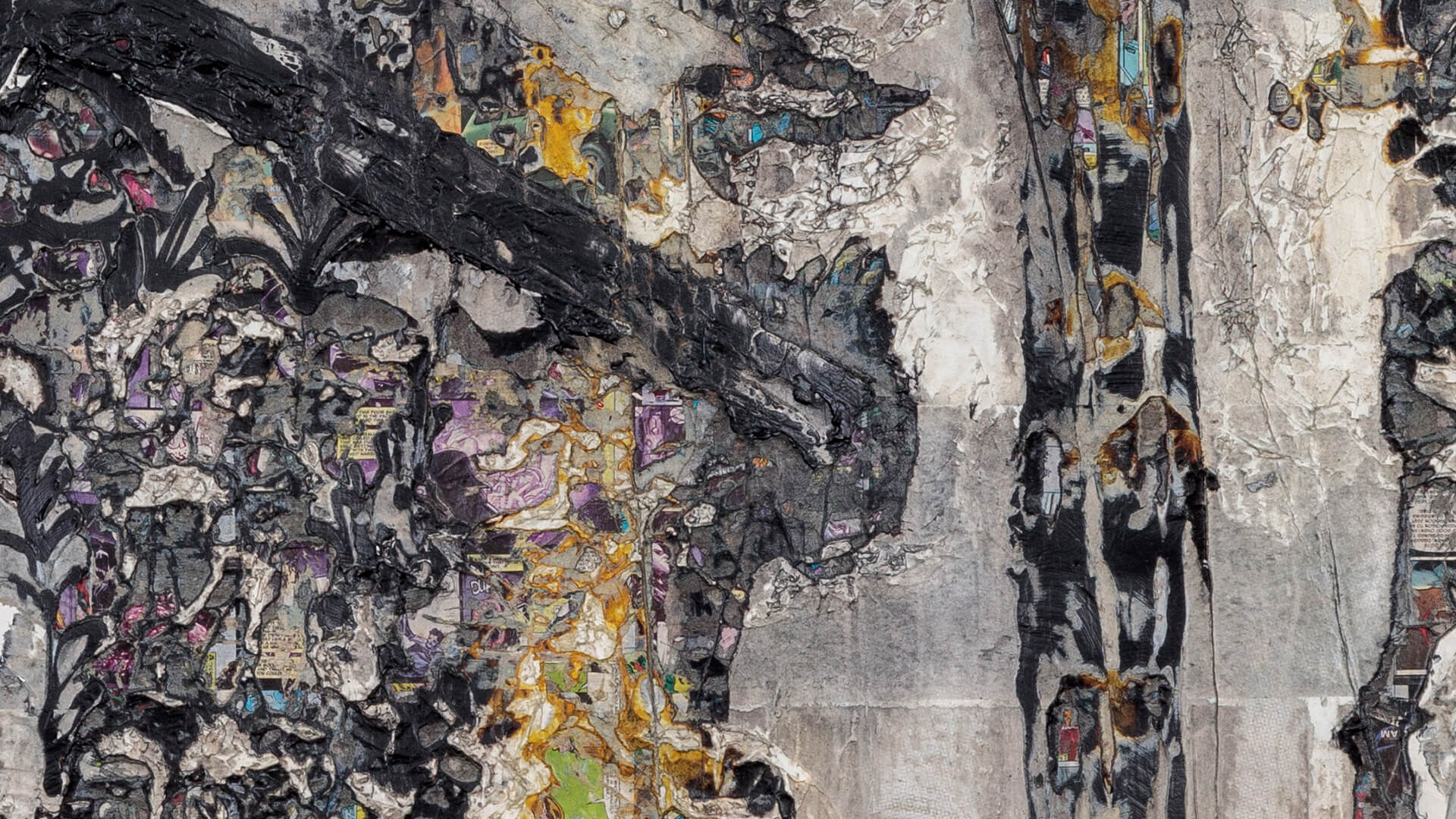
Serralves Foundation
Mark Bradford
Agora
26 Nov 2021 – 26 Jul 2022
‘Bradford’s practice…unlocks known and unknown meanings. Meaning forged in history, in antagonisms that prevent us from amnesia. Meaning and narratives that enable a rebellious call for the rethinking of ways of seeing, ways of knowing, of being together.’—Philippe Vergne [1]

Explore the exhibition
Organized by the Serralves Foundation, and curated by Philippe Vergne with the support of Filipa Loureiro, Mark Bradford’s first exhibition in Portugal surveys his practice over the last three years. The exhibition mirrors upon this moment in history, reacting to growing racial and social tensions in the USA and in the world.
The exhibition title, ‘Agora,’ has a double meaning in Portuguese: the first one refers to the Greek agora, the public space, and the birth of democracy; the second meaning is ‘now’. This simple word encapsulates what the exhibition endeavours to capture, the birthplace of something, a space for reflection and discussion of the now, focused on Bradford’s work, turning to the medieval period as a resonant metaphor for contemporary conflicts and social tensions.
Jungle Jungle, 2021
‘Agora’ begins with a group of images of a unicorn isolated on a floral garden background. Bradford marries the image of the resting unicorn in a garden of flowers with the lettering of a merchant poster advertising divorce and custody services. The targeting of lower income people by predatory companies becomes analogous to the pursuit of a vulnerable animal by rapacious hunters. Simultaneously, this powerful image features in a massive campaign of street posters in various locations around Porto.
‘I don’t like smooth. I don’t like to juxtapose. I like things that are just slammed into each other, when they interrupt each other.’—Mark Bradford [2]
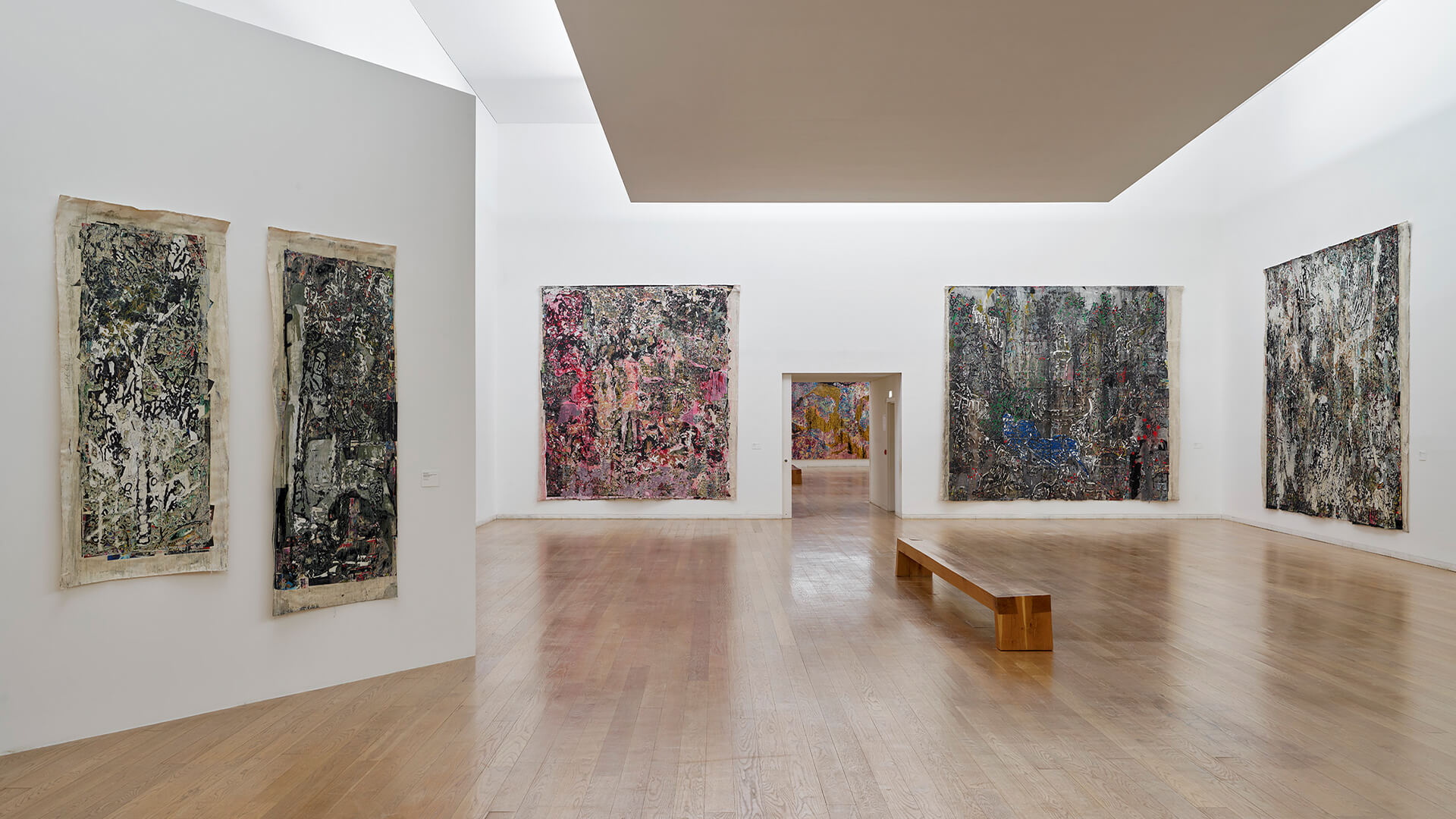
The Hunt of the Unicorn
Lavishly woven in fine wool and silk with silver and gilded threads, the seven, historic wall hangings that are the source material for Bradford’s paintings are amongst the most spectacular surviving artworks of the late Middle Ages. The unicorn was a symbol of many things in the Middle Ages: Christianity, immortality, wisdom, love, and marriage. Every element in the tapestries—from flora and fauna to clothes and gestures—had a particular medieval meaning, and it’s little wonder that their significance is unclear to us.
But the unicorn is also an image of the lover brought down like a stag in the allegorical hunts evoked in medieval works of literature. He is both a creature of flesh and spirit, earthly longing, and eternal life. A shadow of the medieval hangings remains in the group of seven new tapestries created by Bradford, which follow the structure and the narrative of the original works. In this new body of work Bradford creates textured, abstract tableaux of beguiling richness and density, generating a connection to history.
The Hunters Enter the Woods, 2020
‘What Bradford does to ‘The Hunt of the Unicorn’ is a positive erasure, enhanced iconoclasm, a translation that exposes the medieval tapestry as slaughter, a carnage in disguise, that deeply resonate with the violence contemporary to the making of these works and integral to their making.’—Philippe Vergne [3]
Cerberus
In 1965, more than a year after the Civil Rights Act officially ended segregation in public places, the Watts Rebellion in Los Angeles marked a boiling point in the struggle for racial equality in the US. An official government report identified underemployment, poor schooling, and straitened living conditions as the riot’s cause, recommending improvements alongside a map of the neighbourhood speckled with coloured dots—green for destroyed buildings, blue for looting and red for deaths. These ‘hotspots’ became the key motif for Bradford’s ‘Cerberus.’
Cerberus, 2018
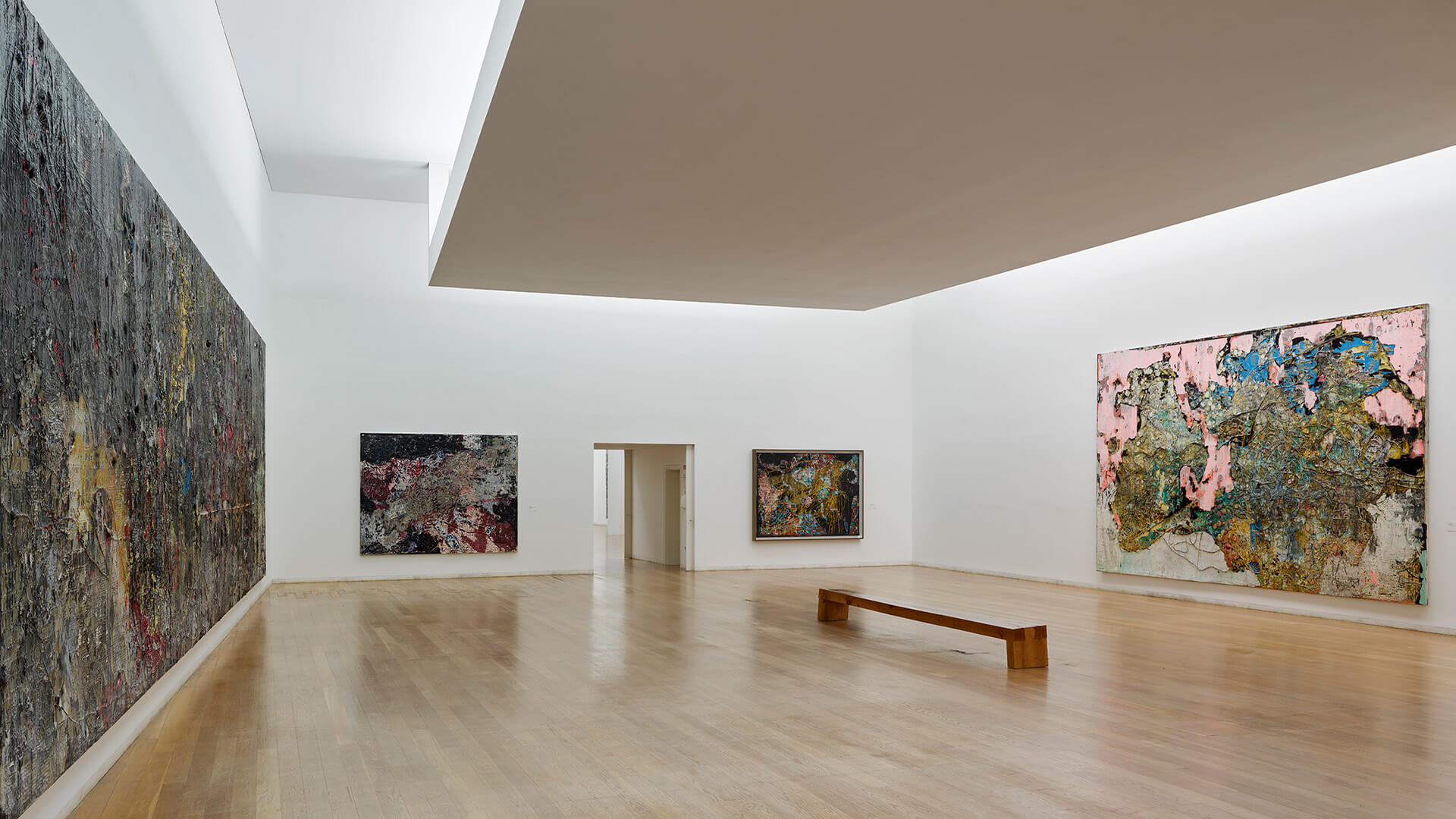
In Greek mythology, Cerberus is the three-headed hound who guards the gateway to the underworld. Viewed as a whole, Bradford’s ‘Cerberus’ has the appearance of a vast action painting, a seething tableau of bubbling colour. Not for nothing has Bradford been called ‘our generation’s Jackson Pollock.’ But his opus might perhaps be termed abstracted rather than purely abstract. In places, the map from the McCone Report is visible beneath this churning morass, as if viewed from an aerial photograph.
‘Where the abstract expressionists cultivated an image of imperious self-absorption, Bradford’s pursues his practice in dialogue with the social environment around him.’—Ekow Eshun [4]
Dancing in the Street
The fabric of the city of Los Angeles is central to the video installation ‘Dancing in the Street.’ The video features the iconic song penned by a trio of songwriters including Marvin Gaye, recorded by Martha and the Vandellas in 1964. Given the context of the civil rights movement and the riots at the time the hit song was released, ‘Dancing in the Street’ took on renewed significance as a call to action when many took to the streets protesting for social change. In Bradford’s video, Martha Reeves and her co-performers are rendered spectral... They flicker in and out of view as Bradford drives through the nocturnal city, projecting their image onto buildings that might have been on fire or boarded up in 1965.
Quarantine Paintings
During the COVID-19 quarantine dictated by LA County’s stay-at-home order, Bradford worked alone in his studio in Los Angeles. During lockdown, he created a new series of paintings that explore the nature of art in isolation and what it means to create in a time of intense societal indetermination, using the language of maps to extract and abstract the facts of the day. The paintings feature gridded structures that appear, disappear and reappear between broad smears of black caulk or streaks of red, yellow and orange paper.
Q1, 2020

Organic blues, greens, and browns evoking the natural environment creep across the planes of the canvases, suggesting a realignment underway in the relationships between competing natural and artificial forces. Gone from these paintings are the hotspots seen in ‘Cerberus,’ leading to an abstraction disassociated from a distinct time and place. This detachment mirrors the way we have all become untethered by the pandemic from our familiar temporal and spatial signposts and parallels the abstraction of our individual and collective experiences within the larger social body.
The King’s Mirror
The King’s Mirror, a printed advertisement repeated serially, translates the message ‘Sexy Cash We Buy Houses Ugly-Nice-Old-New 323-606-7854.’ Posters like this proliferate on the streets of LA, and Bradford uses them as the basis for his ongoing Merchant Posters series, often pilfering the original flyers directly from the fences and telegraph poles to which they’ve been attached. For Bradford, they serve as both the formal and conceptual underpinnings of his works, décollages/collages that engage with the pressures of the cityscape.
‘This exhibition, these paintings are about the profound upheavals that have been happening for centuries but still happen now: Agora. Upheavals that disrupt social orders and unmask unspeakable flaws, that threaten ‘la citée,’ the democratic assembly, the Agora.’—Philippe Vergne [5]
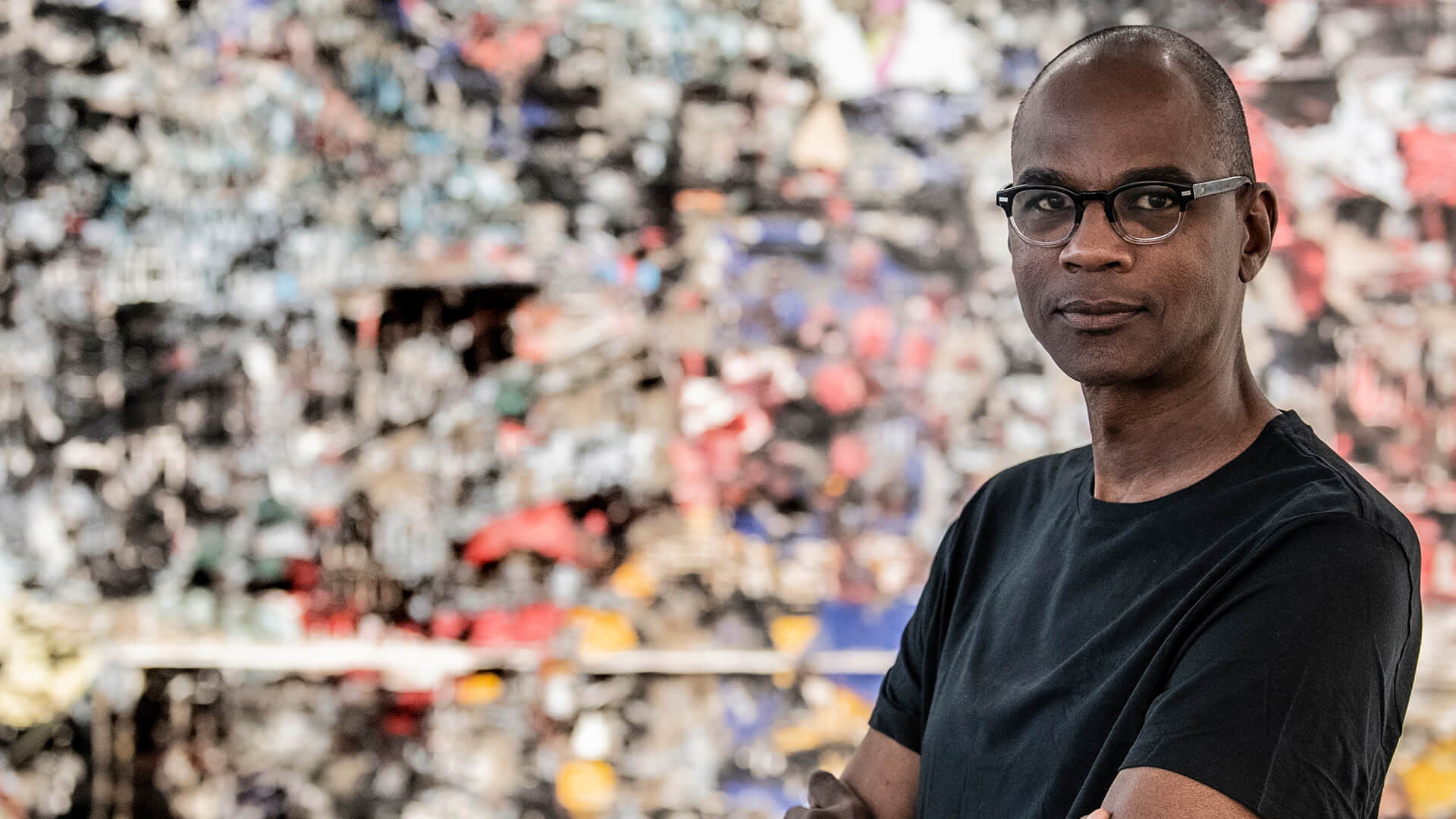
About the artist
Mark Bradford (Los Angeles, 1961) is acknowledged as one of the names that best defined painting in the last two decades, conceiving his own pictorial language to express universal themes such as the distribution of power within societal structures and its impact on the individual, and the relationship between art and community engagement. Using everyday materials and tools from the aisles of the hardware store, he has created a unique artistic language. Frequently referred to as ‘social abstraction,’ Bradford’s work is rooted in his understanding that all materials and techniques are embedded with meaning that precedes their artistic utility.
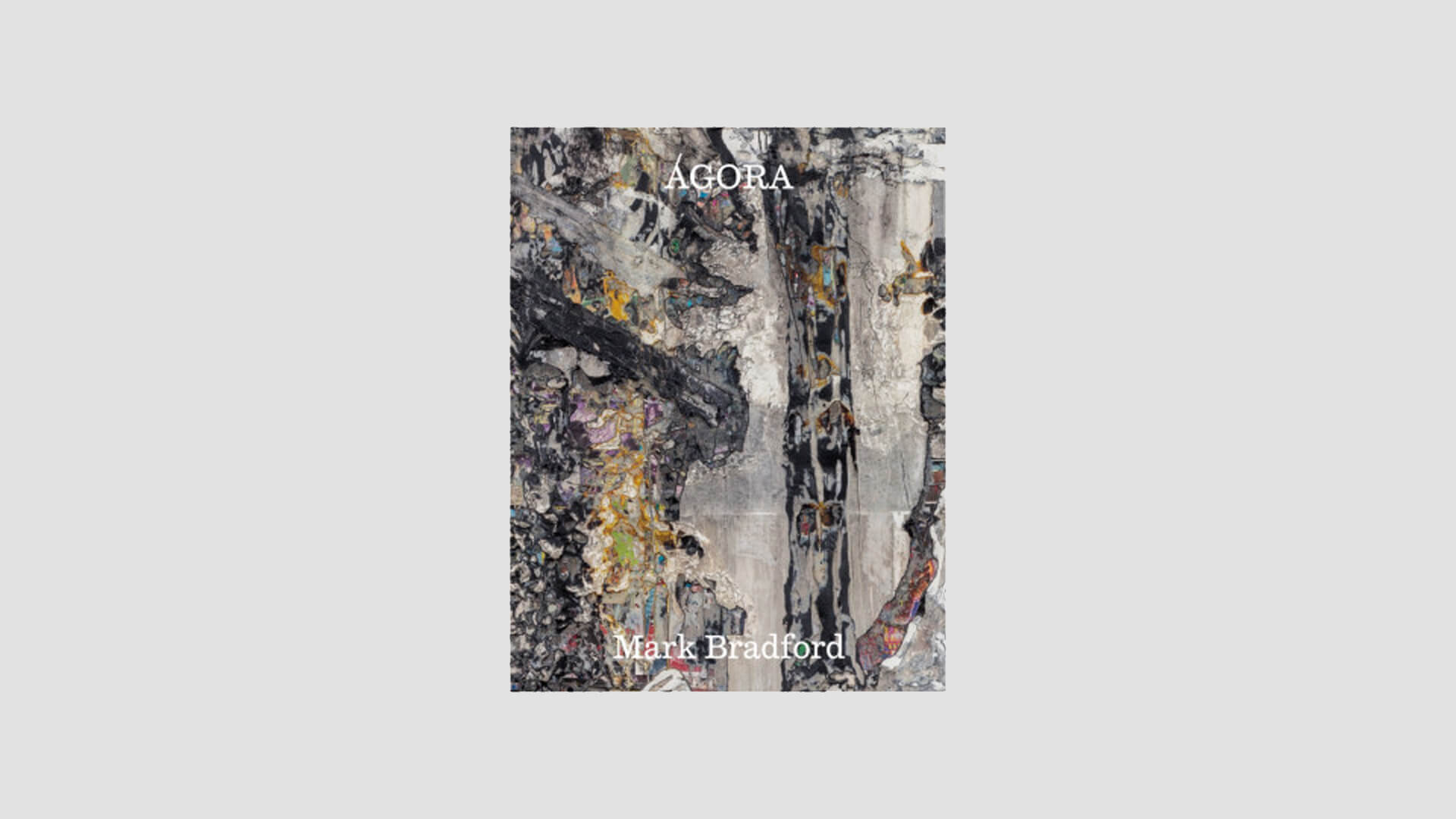
Publication
To accompany the first presentation of Mark Bradford’s work in Portugal, the Serralves Museum has published an extensive book documenting the artist’s production of the last three years, including a recent conversation between the artist and curator and newly commissioned essays by Philippe Vergne and British writer and curator Ekow Eshun. The publication also features a rich visual essay and a selection of texts especially selected by Bradford to shed light on his artistic practice and address important issues of our time.
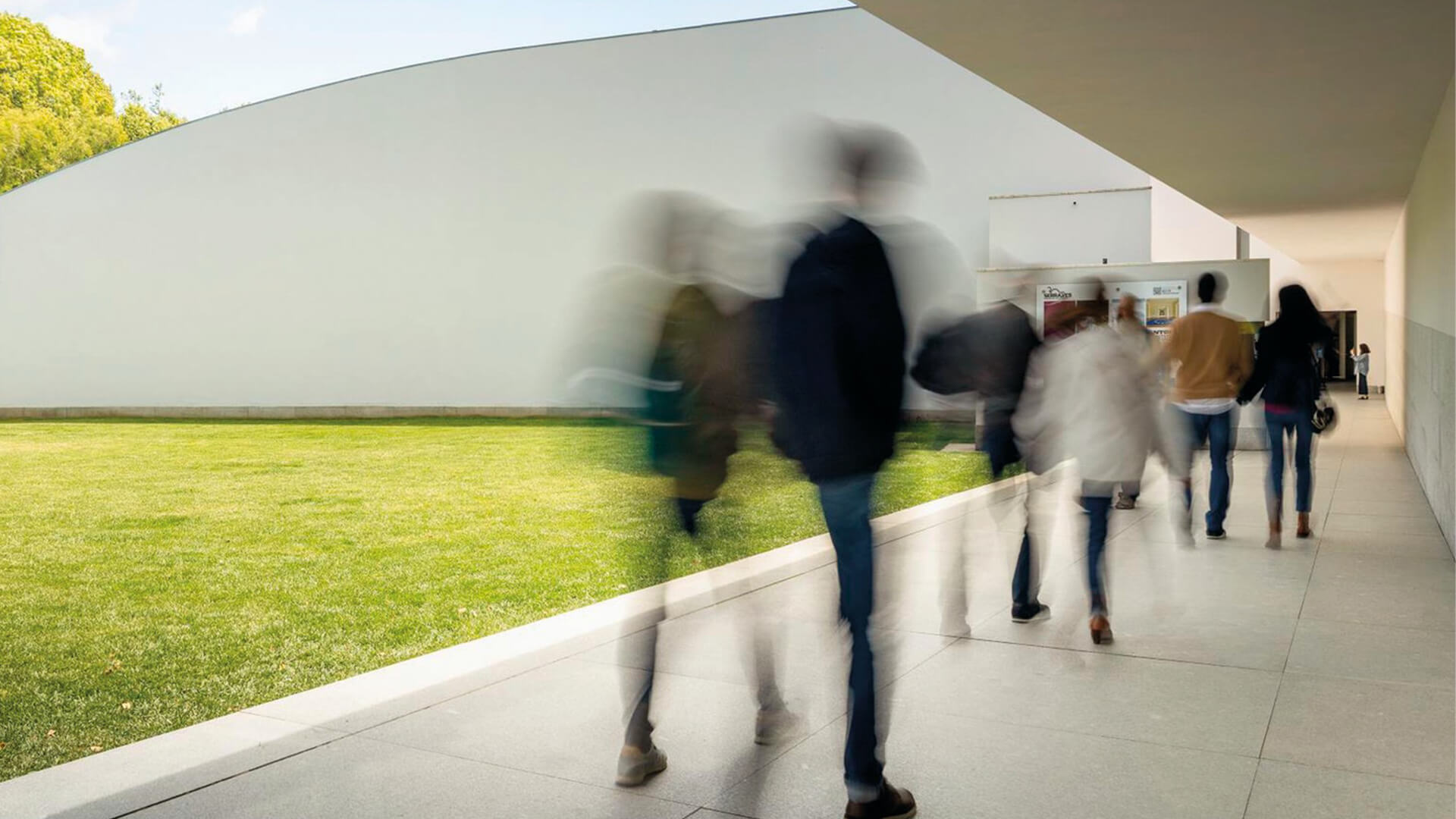
About the museum
The Serralves Foundation is the foremost museum for contemporary art in Portugal. Through its collection, temporary exhibitions, performance, education and public programmes, publishing initiatives, and national and international collaborations, the museum fosters the understanding and appreciation of contemporary art and culture. Introducing the work of the most important artists working today to diverse audiences, strengthening ties with the local community, and encouraging reflection on the relationship between art and the environment that is intrinsic to the context of Serralves, are central to the museum´s mission.
[1] Philippe Vergne, ‘What Happens Between Us,’ in ‘Agora,’ Porto, Portugal: Serralves Foundation, 2021. [2] Conversation between Mark Bradford and Philippe Vergne in ‘Agora,’ Porto, Portugal: Serralves Foundation, 2021. [3] Philippe Vergne, ‘What Happens Between Us,’ in ‘Agora,’ Porto, Portugal: Serralves Foundation, 2021. [4] Ekow Eshun, ‘Acts of Rememory,’ in ‘Agora,’ Porto, Portugal: Serralves Foundation, 2021. [5] Philippe Vergne, ‘What Happens Between Us,’ in ‘Agora,’ Porto, Portugal: Serralves Foundation, 2021.
Installation views: ‘Mark Bradford. Agora,’ Serralves Foundation, Porto, Portugal, 2021 © Mark Bradford. Courtesy Serralves Foundation. Photo: Filipe Braga. Artworks: Mark Bradford, The Unicorn Crosses a Stream (detail), 2020; Mark Bradford, Jungle Jungle, 2021; Mark Bradford, Untitled, 2021; Mark Bradford, The Hunters Enter the Woods, 2020; Mark Bradford, Cerberus, 2018; Mark Bradford, Q1, 2020. Images © Mark Bradford. Photo: Joshua White / JWPictures. Stills from ‘Dancing in the Street’ (2019) © Mark Bradford. Portrait: Mark Bradford, 2019 © Mark Bradford. Photo: Sim Cannetty-Clarke.
Inquire about other available works
Mark BradfordAgora
–
‘Mark Bradford. Agora’ is on view now through 26 July 2022 at Serralves Foundation.
